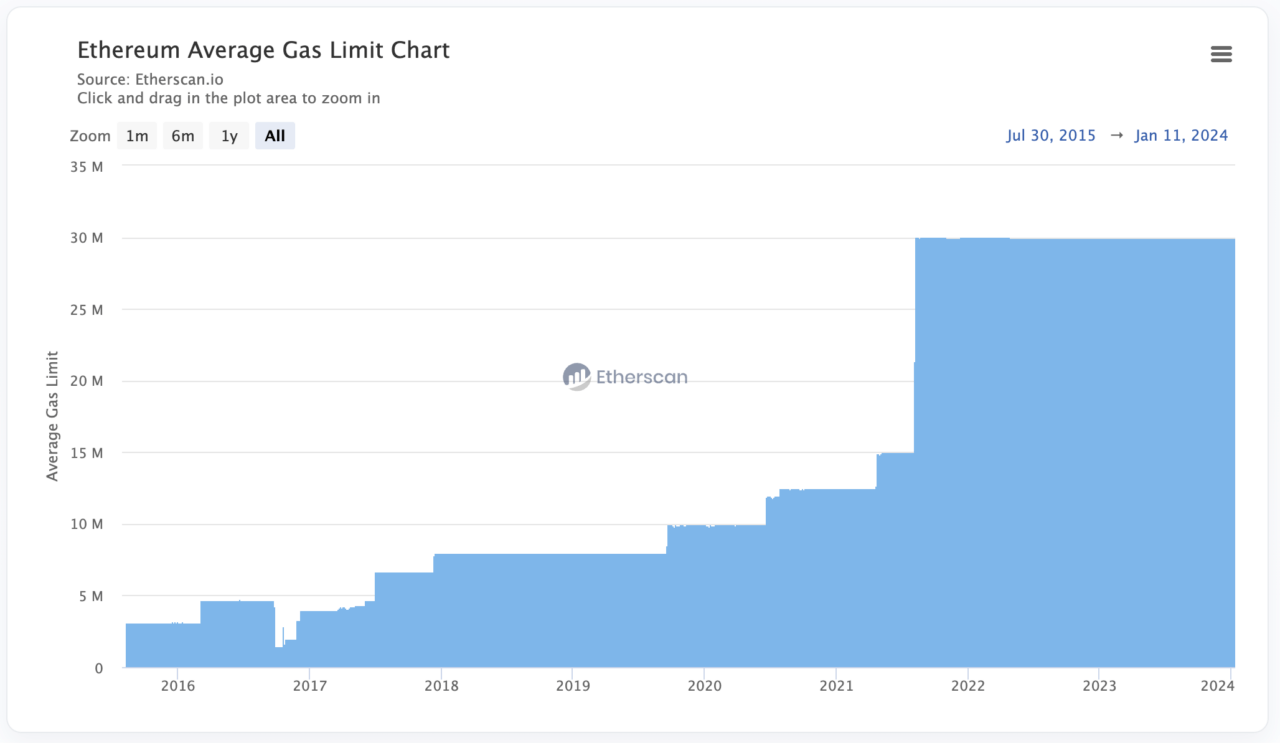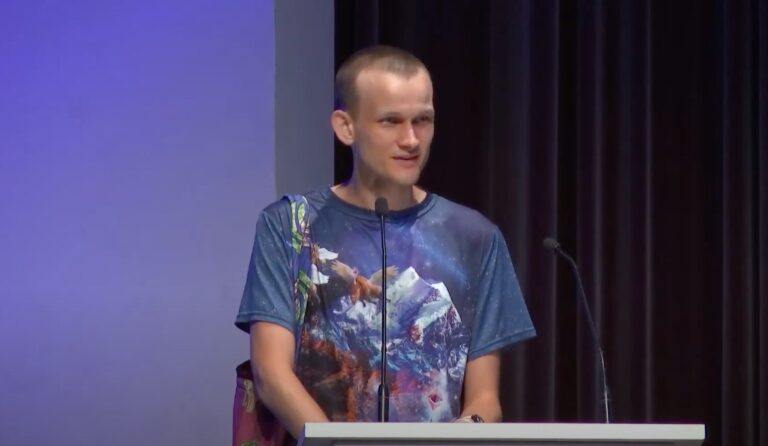The Ethereum community is currently engaged in a debate over a recent proposal by co-founder Vitalik Buterin to increase the network’s gas limit. This suggestion, aimed at potentially improving network throughput, has sparked discussions among developers, node operators, and users, highlighting the complexities of managing a major blockchain protocol.
Buterin’s Proposal for Gas Limit Increase
On January 10, members of the Ethereum Foundation’s Research Team held an Ask Me Anything (AMA) session on Reddit, during which Buterin advocated for a “modest” 33% increase in the gas limit:
“Honestly, I think doing a modest gas limit increase even today is reasonable. The gas limit has not been increased for nearly three years, which is the longest time ever in the protocol’s history (that 2x bump in the chart in late 2021 is “fake”, in that it reflects the EIP-1559 transition, which increased the “limit” by 2x but only increased actual average usage by ~9%). And so splitting the post-2021 gains from Moore’s law 50/50 between increased capacity and increased ease of syncing/verification would imply an increase to around 40M or so.“

Ethereum developer Marius van der Wijden’s Concerns
Ethereum developer Marius van der Wijden addressed the complexities of increasing Ethereum’s gas limit in a blog post published yesterday. He explained that while a higher gas limit could boost transaction throughput, it also poses several risks, including increased blockchain state size and longer synchronization times. As of October 2023, the blockchain state required about 267GB, and a gas limit hike could accelerate this growth.
Van der Wijden highlighted that there aren’t immediate solutions for managing this expanding state size. Additionally, he noted the significant growth in Ethereum’s full node size, from around 350GB in 2021 to over 900GB three years later. He cautioned that increasing the gas limit could further challenge client diversity and exacerbate worst-case scenarios like network attacks. Van der Wijden suggested waiting for the fallout from the upcoming EIP-4844 before considering any gas limit changes, emphasizing the need for careful consideration due to the wide-ranging impact on the network.
Bandwidth Concerns and DoS Risks
On January 11, Gnosis co-founder Martin Köppelmann shared his perspective on Ethereum’s transaction capacity and costs. He argued that since there’s high demand for Ethereum transactions, evidenced by users paying high prices, the network should aim to increase its transaction capacity. However, he acknowledged that expanding Ethereum’s capacity could compromise its quality, potentially affecting its decentralization and neutrality.
Köppelmann pointed out that while Layer 1 (L1) enhancements alone might not suffice, Layer 2 (L2) solutions, which effectively amplify L1 capacity, are crucial. He noted that L2 costs are still prohibitive for many applications, citing Gnosis Chain’s efforts to align with Ethereum’s roadmap to reduce transaction costs for practical use cases like small purchases.
Emphasizing the need to lower transaction costs for real-world applications beyond speculative activities, Köppelmann welcomed the ongoing discussion about Ethereum’s capacity. He suggested that incremental changes could be a viable approach, also mentioning the potential impact of upcoming network upgrades like Dencun.
The Gas Limit’s Role in Ethereum
The gas limit is a crucial component of the Ethereum network, determining the maximum amount of computational work and gas that can be spent on executing transactions or smart contracts in each block. It is strategically set to ensure that blocks are not excessively large, which could negatively impact network performance and synchronization.









